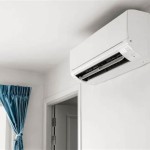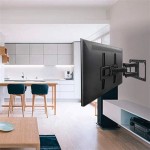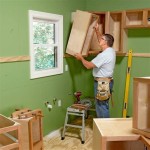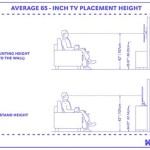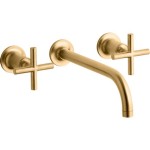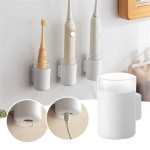TV Wall Mounts for Stone Fireplaces: A Comprehensive Guide
Mounting a television above a stone fireplace presents a unique set of challenges and considerations. While aesthetically pleasing, stone fireplaces require careful planning and execution to ensure a secure and visually appealing installation. This article provides a detailed overview of the factors involved in selecting, preparing for, and executing a TV wall mount installation above a stone fireplace, outlining the necessary tools, mounting techniques, and safety precautions.
Key Considerations Before Installation
Before proceeding with any installation, a thorough assessment of the fireplace and surrounding area is crucial. This assessment should encompass the type of stone, the structural integrity of the wall, the intended viewing height, and the planned cable management strategy. Neglecting these preliminary steps can lead to complications during installation and potential damage to the fireplace or the television.
Stone Type and Integrity: Stone fireplaces are constructed from various materials, including natural stone (such as limestone, granite, or slate) and manufactured stone veneer. Natural stone is typically denser and more robust, offering a more secure anchor point for a wall mount. Manufactured stone veneer, on the other hand, is often thinner and less structurally sound, requiring specialized mounting hardware and techniques. It's imperative to identify the type of stone and assess its condition. Look for any signs of cracking, crumbling, or loose stones, as these may indicate underlying structural issues that need to be addressed before proceeding.
Wall Structure: The wall behind the stone also plays a significant role in the mounting process. Ideally, the stone is affixed to a solid substrate, such as concrete, brick, or a reinforced stud wall. Determining the composition of the wall behind the stone is crucial for selecting the appropriate anchors and ensuring a strong and stable mount. Using a stud finder, or even better, opening up a small inspection hole, can help determine the wall's composition before moving forward.
Viewing Height: Optimal viewing height is critical for comfort and ergonomics. Generally, the center of the television screen should be at eye level when seated. Calculate the desired viewing height based on the seating arrangement and the size of the television. This measurement will dictate the placement of the wall mount on the stone fireplace. Consider using painter's tape to mock up the TV's position on the wall to ensure comfortable viewing angles.
Cable Management: Proper cable management is essential for a clean and professional-looking installation. Plan the routing of power cords, HDMI cables, and other necessary connections before mounting the television. Consider using in-wall cable management kits to conceal the wires behind the stone, creating a seamless and aesthetically pleasing appearance. If you plan to run cables behind the stone, ensure that the wiring complies with local electrical codes.
Selecting the Right TV Wall Mount
Choosing the appropriate TV wall mount is paramount to the success and safety of the installation. The mount must be compatible with the television's VESA (Video Electronics Standards Association) mounting pattern, capable of supporting the television's weight, and appropriate for the specific type of stone fireplace. There are several types of TV wall mounts available, each with its own advantages and disadvantages.
Fixed Mounts: Fixed mounts are the simplest and most affordable option. They hold the television flush against the wall, providing a low-profile appearance. However, fixed mounts offer limited adjustability, making them less suitable for situations where viewing angles need to be altered. These are ideal for smaller TVs which need to sit centered above the fireplace.
Tilting Mounts: Tilting mounts allow the television to be tilted up or down, improving viewing angles and reducing glare. This type of mount is particularly useful when the television is mounted higher than eye level, as is often the case above a fireplace. Tilting mounts offer a good balance between adjustability and affordability.
Full-Motion Mounts: Full-motion mounts, also known as articulating mounts, provide the greatest range of motion. They allow the television to be extended, swiveled, and tilted, offering maximum flexibility in viewing angles. Full-motion mounts are ideal for situations where the television needs to be viewed from multiple locations in the room. However, they are typically more expensive and require more space behind the television.
Weight Capacity: Ensure that the chosen wall mount has a weight capacity that exceeds the weight of the television. Overloading a wall mount can compromise its stability and potentially lead to a dangerous failure. Consult the television's specifications to determine its weight and select a mount with an adequate safety margin.
VESA Compatibility: The VESA mounting pattern is a standardized set of screw holes on the back of the television. The wall mount must be compatible with the television's VESA pattern to ensure a secure and proper fit. Verify the VESA specifications of both the television and the wall mount before making a purchase.
Installation Procedures and Techniques
Installing a TV wall mount on a stone fireplace requires specialized tools and techniques to ensure a secure and aesthetically pleasing result. The selection of appropriate anchors and the precise execution of drilling are critical for success. Safety precautions should be observed throughout the entire installation process.
Tools and Materials: The following tools and materials are typically required for installing a TV wall mount on a stone fireplace:
- TV wall mount
- Drill with masonry drill bits
- Stud finder (if mounting to a stud wall behind the stone)
- Level
- Measuring tape
- Pencil
- Safety glasses
- Dust mask
- Anchors suitable for stone (e.g., sleeve anchors, wedge anchors, or chemical anchors)
- Socket wrench or adjustable wrench
- Cable management kit (optional)
Drilling and Anchoring: Drilling into stone requires patience and precision. Start by marking the desired location of the wall mount on the stone. Use a level to ensure that the marks are aligned horizontally. Select a masonry drill bit that is slightly smaller than the diameter of the chosen anchors. Begin drilling slowly, applying consistent pressure. Avoid using excessive force, which can crack or chip the stone. Once the holes are drilled to the required depth, insert the anchors and tighten them securely. The type of anchor used will greatly depend on the type of stone involved. For natural stone, wedge anchors or sleeve anchors may be appropriate while chemical anchors are better suited for manufactured stone.
Mounting the Bracket: Once the anchors are securely in place, attach the wall mount bracket to the stone. Align the bracket with the anchors and tighten the bolts or screws provided with the mount. Ensure that the bracket is level and securely fastened before proceeding. Double-check the bracket's alignment with a level once again.
Attaching the TV: With the bracket securely mounted on the wall, carefully lift the television and attach it to the mounting plate. Most wall mounts use hooks or latches to secure the television to the plate. Follow the manufacturer's instructions for attaching the television to the mount. Ensure that all connections are secure and that the television is properly aligned with the bracket.
Cable Management: After the television is mounted, organize and conceal the cables. Use cable ties or zip ties to bundle the cables together. If using an in-wall cable management kit, run the cables through the wall and connect them to the appropriate devices. Conceal any exposed cables behind the television or within decorative cable covers.
Safety Precautions: Safety should always be the top priority when installing a TV wall mount. Wear safety glasses and a dust mask to protect your eyes and respiratory system from stone dust. If working at a height, use a sturdy ladder and have someone assist you. Disconnect the power to the television and any other electrical devices before starting the installation. Consult a qualified professional if you are unsure about any aspect of the installation process. Following these precautions minimizes the risk of accidents and injuries.
Installing a TV wall mount on a stone fireplace is a project that requires careful planning, the right tools, and a meticulous approach. By understanding the key considerations, selecting the appropriate wall mount, and following the proper installation procedures, a homeowner can achieve a secure and aesthetically pleasing television installation that enhances the living space.

Mounting A Tv Above Fireplace With Full Tutorial Fixthisbuildthat

Mounting A Tv Above Fireplace With Full Tutorial Fixthisbuildthat

Natural Stone Fireplaces With Wall Mount Television Design Ideas

Mounting A Tv Above Fireplace With Full Tutorial Fixthisbuildthat

Tv Mounting On Stone Diy Youtube

Made How To Mount A Flat Screen Tv On Stone Fireplace Diy

Shome And Theater Systems Residential Solutions Photo Album Tv Mount Over Stone Fireplace In New Canaan Ct

Installing A Tv On Stacked Stone Wall

Mantelmount How To Mount Your Tv Above A Fireplace Infarrantly Creative

How To Mount Tv Into Stone Above Fireplace Ft Collins Co Youtube

